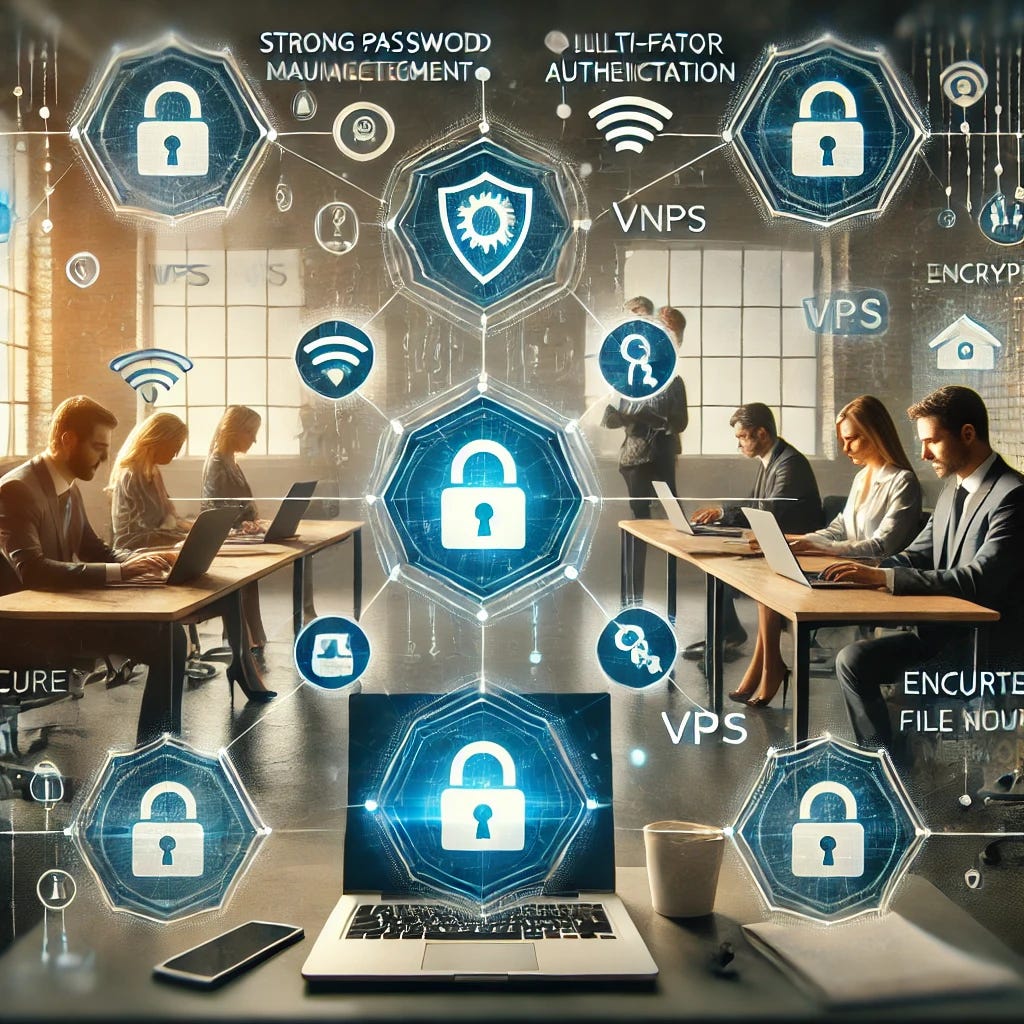Securing Remote Workforces: Best Practices for SMBs
Essential Cybersecurity Strategies for Protecting SMBs' Remote Workforces
The shift to remote work has transformed many small and medium-sized business (SMBs) operations. While this offers flexibility, it also brings new cybersecurity challenges. Without proper security measures, remote environments can become susceptible to cyber threats. Below are effective strategies to secure your remote workforce and protect your business from attacks.
Developing Remote Work Security Policies
Establishing clear security policies is essential for preventing breaches and maintaining strong cybersecurity for remote teams. Small and medium-sized businesses (SMBs) should develop policies that define access levels according to employees' roles, ensuring that staff only have access to the systems and data necessary for their responsibilities. It is also important to outline guidelines for the acceptable use of company equipment and data and emphasize secure practices for using personal devices.
To stay ahead of evolving threats, regularly update your policies. Conducting quarterly employee training sessions and interactive workshops can reinforce best practices and keep your workforce informed about the latest security protocols.
Enhancing Cybersecurity for Remote Teams
To enhance your team's cybersecurity effectively, begin with regular risk assessments to identify vulnerabilities and develop strategies for mitigating risks. Implementing multi-factor authentication (MFA) adds an extra layer of security, even in cases where passwords are compromised. It's essential to use secure file-sharing tools that feature end-to-end encryption and strong access controls. Additionally, deploying Virtual Private Networks (VPNs) helps protect communications.
In addition, utilize encrypted devices and cloud-based document management systems to centralize and secure your data. This approach guarantees data protection and simplifies compliance.
Securing Home Networks
Home network security is essential for any remote workforce strategy. Small and medium-sized businesses (SMBs) should provide employees with clear guidelines on securing their home routers. This includes updating default passwords and enabling WPA3 encryption. Educating staff on the significance of using firewalls and reliable antivirus software to protect work devices from malware and unauthorized access is also essential.
Businesses can minimize the risks associated with remote work setups by prioritizing home network security and providing the necessary tools and training.
Conclusion
Securing a remote workforce is essential for SMBs navigating the digital landscape. By implementing robust security policies, enhancing team-wide cybersecurity measures, and focusing on obtaining home networks, your business can effectively reduce its exposure to cyber risks. Regular updates and training are essential for avoiding emerging threats and ensuring your team remains protected and your data is secure.
Featured Blog:
SafetyDetectives recently enjoyed interviewing Christophe Foulon, Founder and Coach at CPF Coaching. With a career in IT helpdesk support, Christophe discovered his passion for guiding individuals and businesses toward safe and efficient technology use early on. Over the years, he transitioned into cybersecurity, where he recognized the need for strategic mentorship, particularly for small and medium-sized businesses. This realization led to CPF Coaching, which provides Fractional Executive Advisory Services (vCISO) to help companies to develop strong security strategies and mature their programs.
https://www.safetydetectives.com/blog/christophe-foulon-cpf-coaching/
Product Shout out: INE
The previous blog covered how essential employee training is, and INE offers just that.
Experience an on-demand training platform that puts real-world, practical learning first - regardless of skill level. Learn from expert instructors, dive into immersive labs, and prove your knowledge.



